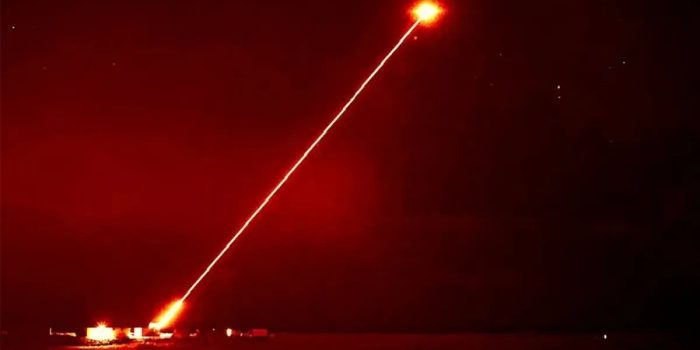The United Kingdom stands at the forefront of ushering laser weaponry into real combat scenarios, with intentions to deploy the DragonFire laser-directed energy weapon (LDEW) in Ukraine as a defense against Russian drone threats. DragonFire, a formidable product of British military innovation, has showcased its prowess by effectively intercepting aerial adversaries during rigorous testing in January 2024.
Originally earmarked for implementation by 2032, UK Defense Secretary Grant Shapps has indicated that DragonFire’s operational readiness could be accelerated to as early as 2027, following reforms in procurement protocols aimed at expediting its development.
“I’ve taken the opportunity to arrange additional conversations with colleagues about whether we could speed it up even faster, very much using the integrated procurement model of saying there’s a war on,” Shapps said.
“Let’s say that it didn’t have to be 100% perfect in order for Ukrainians perhaps to get their hands on it, can we do any better – but 2027 is still the date as of this moment. But of course, I’ll look to see what we can do to speed up,” he added.

DragonFire epitomizes a significant leap in laser weapon technology, boasting unparalleled precision and devastating firepower. Unlike its predecessors confined to controlled military exercises, DragonFire has the potential to reshape the landscape of warfare by offering pinpoint accuracy and cost-efficient engagement capabilities. With the ability to obliterate targets from distances of up to a kilometer and at a fraction of the cost of conventional missiles, DragonFire presents an enticing solution for neutralizing airborne threats.
The urgency of deploying DragonFire in Ukraine is underscored by the nation’s precarious circumstances. With nearly a fifth of its territory under Russian occupation and its military resources waning, Ukraine faces an imminent threat of defeat.
Despite receiving support from allies, including provisions of ammunition and training, Ukraine’s ability to withstand Russian aggression remains precarious. Russian assaults on Ukrainian power infrastructure further compound the situation, posing a sustained threat to the country’s defensive capabilities.
The deployment of DragonFire could potentially tip the scales in Ukraine’s favor, furnishing a cost-effective means to counter Russian drones and fortifying the nation’s defense capabilities. However, the projected timeline for DragonFire’s readiness raises doubts about Ukraine’s capacity to endure until 2027.
“We are seeing Russia batter away at the front line, employing a five-to-one advantage in artillery, ammunition, and a surplus of people reinforced by the use of newish weapons,” Richard Barrons, ex-commander of UK’s joint forces, told BBC.

However, this situation can change if Ukraine receives timely help from other countries. Nick Reynolds and Jack Watling, two military analysts at the Royal United Services Institute (RUSI) said:
“If Ukraine’s partners continue to provide sufficient ammunition and training support…to enable the blunting of Russian attacks in 2024, then Russia is unlikely to achieve significant gains in 2025. If Russia lacks the prospect of gains in 2025…then it follows that it will struggle to force Kyiv to capitulate by 2026.”
Given the exigencies of the conflict and the pressing nature of Ukraine’s needs, prompt assistance from allies is imperative to stave off further territorial losses and safeguard the nation’s sovereignty.
In essence, the envisaged deployment of DragonFire in Ukraine heralds a momentous advancement in military technology, furnishing a potent and cost-effective deterrent against Russian belligerence. Nevertheless, the timeframe for its availability underscores the imperative for timely intervention to avert Ukraine’s capitulation to Russian encroachments.


